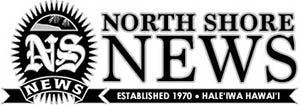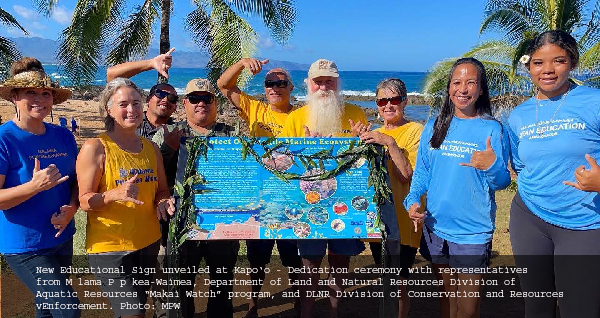By Penny Nakamua
If you’ve been around the North Shore for any length of time, it’s hard not to notice the increased traffic and usage of our ever increasingly popular beaches. We went from overtourism to no tourism (lockdown period) and back again to overtourism.
For the next couple of years, the non-profit Mālama Pūpūkea-Waimea will be studying the carrying capacity of the Marine Conservation District, originally established in 1983, which extends from the southern end of Waimea Bay to Kalua O Maua (Three Tables) to Kapo’o ( tidepools and Sharks Cove) in the north.
“Thanks to the Legislature that passed Act 31, and former Senator Gil Riviere, our organization was awarded the $280-thousand-dollar contract, and right now we’re conducting local surveys, and have hired a technical consulting firm that is looking on the parking, traffic, septic tanks, and infrastructure, including pathway erosion,” said volunteer Mālama Pūpūkea-Waimea President Denise Antolini.
“We want to prioritize our local residents who are feeling pushed out, there’s a real sense of grieving for what used to be,” said Antolini. “Through our survey we’d like to hear more from everyone, we know that some locals avoid the beaches during peak hours, because there’s so much overcrowding.”
At many of the volunteer workdays, most recently at Kapo’o, popularly known as Sharks Cove, the volunteers winced as they observed people stepping on the reefs,with increased tourism and over usage often comes permanent damage, which is why this carry capacity study is so imperative.
“When people are in the water, do fish avoid that area, and do they change their habits? This is called fish avoidance,” explained Antolini. “People stepping on live coral reefs, and the coral gets broken, like we’re observing now. I think it’s due to mostly ignorance, nobody wants to harm the marine life, but nothing teaches them before they get in the water.”
A new sign at Kapo’o is replacing the old worn out and barely legible 12-year-old sign. Another new sign will also replace the old worn-out sign at Three Tables, hopefully by the end of the year.
“We want to educate visitors and locals alike to pay attention to coral health, our tide pools, the marine diversity and the human impact,” said Antolini, who’s group has worked tirelessly with the Department Land and Natural Resources, the City and County of Honolulu Department of Parks and Recreation and several other state and local agencies to find funding and approval for these educational signs. “A special shout out to the Patagonia Hale’iwa store that gave a generous donation to make the new signs possible.”
Mālama Pūpūkea-Waimea is hoping through the new signs, which will include a QR code to their website and DLNR’s website, they can educate people on pono practices, like how to behave ethically when you’re at the ocean, which starts with reef safe sunscreens.
“One day we were out here at Kapo’o and we saw this oily sheen across the shallow part of the tidepools,” mentioned a volunteer with a sigh. “We hope with the new signs, at least people will realize what a special place this is and be a better user, so we can protect it.”
The new educational signs may not stop all violators, but Mālama Pūpūkea-Waimea is hoping it will help to educate those who visit this area to be respectful of this magnificent, but fragile stretch of coastline.



